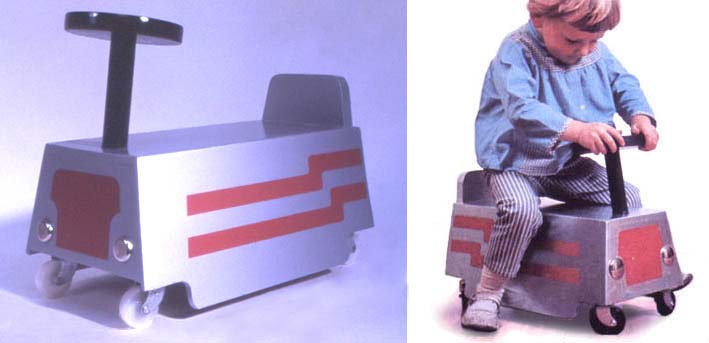
"ride-on truck"
design: Roger Limbrick c.1964
produced by: James Galt
design: Roger Limbrick c.1964
produced by: James Galt
Roger then continued working on designs for Galt, and was encouraged to produce his own range of toy designs by Edward Newmark, the managing director of Galt Toys - the retail arm of James Galt educational supplier.
The ride-on truck was commissioned to compliment to the ride-on duck already in production.








